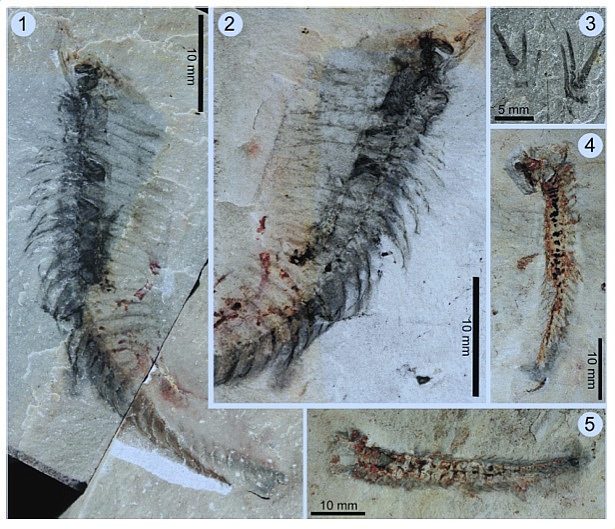fossilshk
(Lung)
管理員
  








UID 1
精華
23
積分 4775
帖子 2827
閱讀權限 200
註冊 2006-7-14
來自 中國/香港
狀態 離線
|
[廣告]:
505-million-year-old fossil found in B.C. park named after Johnny Depp
Edward Scissorhands actor Johnny Depp has been immortalized in the name of a newly discovered fossil species from ancient Canada ó a 505-million-year-old marine creature with scissor-like claws found by a British researcher in B. C. is Kootenay National Park. The scorpion-shaped marine arthropod, extinct since the Cambrian era of Earth history when animal life exploded with an unprecedented number and variety of species, has been dubbed Kooteninchela deppi in honour of the location of the find and the 49-year-old American actor Depp, described by the fossil’s discoverer ó Imperial College London paleontologist David Legg ó as his ‘favourite movie star. î Images of the actual fossil specimens discovered by the British researcher in B.C.’s Kootenay National Park. Courtesy the Journal of Paleontology.

Edward Scissorhands actor Johnny Depp has been immortalized in the name of a newly discovered fossil species from ancient Canada — a 505-million-year-old marine creature with “scissor-like claws” found by a British researcher in British Columbia’s Kootenay National Park.
The scorpion-shaped marine arthropod, extinct since the Cambrian era of Earth history, when animal life exploded with an unprecedented number and variety of species, has been dubbed Kooteninchela deppi in honour of the location of the find and the 49-year-old American actor Depp, described by the fossil’s discoverer — Imperial College London paleontologist David Legg — as his “favourite movie star.”
In the acclaimed 1990 Tim Burton film Edward Scissorhands, Depp played an artificial, human-like being whose hands — left unfinished when his inventor dies — are scissors.
“When I first saw the pair of isolated claws in the fossil records of this species, I could not help but think of Edward Scissorhands,” Legg said in a summary of his new study of the species, published in the latest issue of the Journal of Paleontology. “Even the genus name, Kooteninchela, includes the reference to this film as ‘chela’ is Latin for claws or scissors. In truth, I am also a bit of a Depp fan, and so what better way to honour the man than to immortalize him as an ancient creature that once roamed the sea?”
Canada’s renowned Burgess Shale fossil bed in the Rocky Mountains near Field, B.C., near the Alberta border, offers paleontology’s clearest window in the vanished world of the so-called “Cambrian Explosion.” Legg details in his study how Kooteninchela deppi has been classified as a “sister” species to Worthenella cambria, another extinct creature known from the fossil record preserved in the Burgess Shale.
Legg hypothesizes that Kooteninchela deppi, which was about four centimetres long, would have been a hunter or scavenger on the ancient seabed that was later uplifted to its present-day perch in B.C. He also positioned the species within a family tree of other “great-appendage” arthropods that gave rise to present-day species from spiders and scorpions to insects and crabs.
“Just imagine it: the prawns covered in mayonnaise in your sandwich, the spider climbing up your wall and even the fly that has been banging into your window and annoyingly flying into your face are all descendants of Kooteninchela deppi,” Legg said in the study overview. “Current estimates indicate that there are more than one million known insects and potentially 10 million more yet to be categorized, which potentially means that Kooteninchela deppi has a huge family tree.”
MAY 16, 2013 http://www.vancouversun.com/ente ... /8395937/story.html
| 
 |
|





